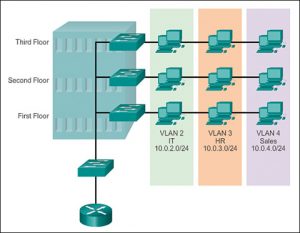Introduction:
This assignment aims to further understanding of the significance of definitions in technical writing. Through hands-on practice we will learn about the role that definitions have in communicating information clearly to a specific audience. Additionally, we will be approaching the purpose of a piece of writing specific to the context of its audiences. Understanding the audience calls the writer to understand different levels of detail and choose the right one based on the situation. In completing this assignment, we aim to improve our ability to communicate technical information in a wide range of contents. Our hands-on practice consists of three parts: writing a definition, peer review, and reflection. Completing the definition segment requires choosing a complex term specific to our profession and writing a parenthetical, sentence, and expanded definition of this term audience. The expanded definition must use at least four expansion strategies and include one visual, with citations from at least three outside sources. The peer review involves offering support and constructive criticism to a team member. Finally, the reflection asks us to consider each other’s feedback to revise our work.
Reading Situation:
My hypothetical reading situation assumes that I have been hired as a network administrator. In this role I would be hired to create a VLAN for a large office with multiple departments. The employees have varying levels of technical knowledge, so I would need to explain the concept of a VLAN in a simple way to supervisors and managers.
Parenthetical Definition:
A VLAN (Virtual Local Area Network) is a network that operates within a single physical LAN (local area network). In the context of an office a LAN will be all the connections between the devices in your workplace. A VLAN logically separates network traffic through strategic configuration (AL-Khaffaf).
Sentence Definition:
A Virtual Local Area Network (VLAN) is a technology that enables the creation of multiple networks within your workplace. This allows administrators to logically group devices and separate network traffic, improving network security and reducing broadcast traffic.
Expanded Definition:
What is a VLAN?
VLAN stands for Virtual Local Area Network and it is a technology used for creating multiple isolated networks on a single network. A network for example could be the connections between all of the devices in an office space. Through a VLAN data is divided into multiple broadcast domains, each being assigned to a separate VLAN. Data in this context is any digital sources sent to coworkers from emails to powerpoints. This helps to limit network traffic, improve network security, and better manage network resources.
How does it work?
In a VLAN, each network segment is isolated from each other and operates separately. For example all Accountants at a company might connect their devices to the same network segment. This is done by assigning a unique identifier, called a VLAN ID, to each segment. Data in a certain network segment is then assigned a VLAN ID and is forwarded through that VLAN accordingly.
How is it used?
VLANs are widely used in enterprise networks to create different network segments for different departments, to improve network security, and to manage network resources. Security is improved because network segments are extremely hard to connect to unless you have the certification to do so on your device (Leischner, Garrett, and Tews). Resources are improved because each network segment allows you to carry information more directly to its end location.
Is there a risk in using VLAN?
VLANs can improve network security by isolating different network segments, but VLAN configurations can also introduce security risks if not properly configured. For example, rogue switches, unauthorized access, and switch misconfigurations can allow unauthorized access to VLANs, compromising network security (Leischner, Garrett, and Cody Tews). VLANs should be installed and implemented by an experienced network administrator to avoid these risks.

(Cisco Press) Explanation: Each VLAN is represented by a different colour
Sources:
Al-Khaffaf, Dhurgham Abdulridha Jawad. “Improving LAN Performance Based on IEEE802. 1Q VLAN Switching Techniques.” Journal of University of Babylon for Engineering Sciences 26.1 (2018): 286-297.
“Cisco Press.” VLAN Segmentation (3.1) > Cisco Networking Academy Switched Networks Companion Guide: VLANs | Cisco Press, Cisco Press, 25 June 2014, https://www.ciscopress.com/articles/article.asp?p=2208697&seqNum=4.
Leischner, Garrett, and Cody Tews. “Security through VLAN segmentation: Isolating and securing critical assets without loss of usability.” proceedings of the 9th Annual Western Power Delivery and Automation Conference, Spokane, WA. 2007.
Leave a Reply